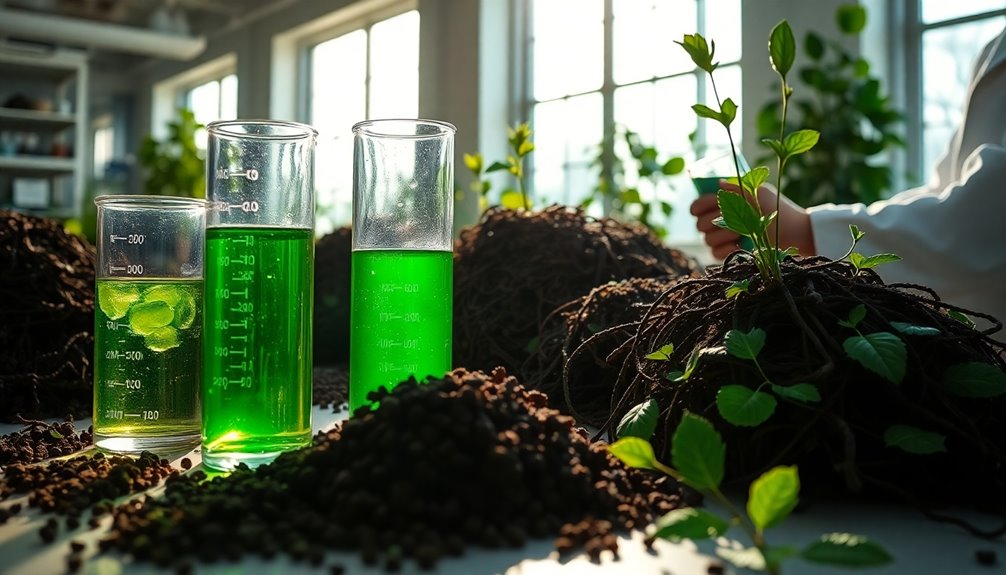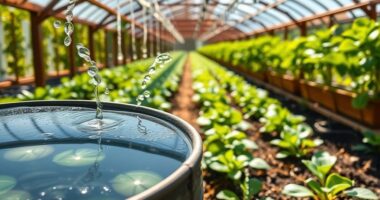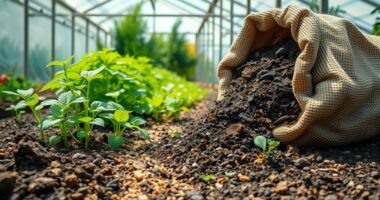Innovative lignin conversion strategies are transforming agriculture by enhancing sustainability and minimizing environmental impact. By utilizing biological and chemical methods, you can break down lignin into valuable products, improving biorefinery profitability. Eco-friendly pesticides made from lignin reduce heavy metal use and promote healthier farming practices. These advancements not only help reduce greenhouse gas emissions but also create opportunities for more efficient agricultural systems. Keep exploring to discover how lignin can continue to reshape eco-friendly farming practices.
Key Takeaways
- Lignin's rich biochemical potential can be harnessed to produce sustainable agricultural inputs, enhancing profitability for biorefineries.
- Microbial consortia and extremophiles enable efficient biological depolymerization of lignin, promoting eco-friendly agricultural practices.
- Mechanochemical synthesis of lignin-based pesticides reduces water usage and minimizes heavy metal toxicity in farming.
- Integrating biological and chemical methods optimizes lignin utilization, addressing structural challenges and enhancing sustainability.
- Ongoing research in lignin valorization continues to drive innovations for eco-friendly agriculture, promoting sustainable production methods.

As you explore sustainable agriculture, you'll find that lignin conversion strategies offer promising pathways to eco-friendly practices. Lignin, the second most abundant biopolymer in land-based biomass, holds incredible potential for transforming agricultural methods. By tapping into this resource, you can harness a variety of aromatic and building block chemicals, ultimately increasing profitability for biorefineries. The full exploitation of lignin can significantly contribute to reducing greenhouse gas emissions by producing biobased products that replace fossil fuels.
One of the most exciting avenues in lignin valorization is biological depolymerization. Utilizing microbial consortia and extremophiles, researchers are developing sustainable methods for breaking down lignin into usable forms. These biological routes not only enhance efficiency but also make lignin utilization economically viable. By integrating biological methods with chemical approaches, you can further improve depolymerization outcomes, paving the way for more efficient biorefineries. Moreover, the structural variations of lignin present challenges that researchers are actively working to overcome.
Biological depolymerization of lignin using microbial consortia offers a sustainable and economically viable path for enhanced biorefinery efficiency.
Chemical methods, including thermochemical and catalytic processes, also present effective options for lignin depolymerization. However, you should be aware that these methods require high energy inputs and face technical challenges due to the complex structure of lignin. Optimizing these processes for environmental sustainability is crucial. When scaled effectively, chemical methods can lead to cost-effective production of valuable lignin-derived products.
In agriculture, lignin conversion strategies can lead to the development of eco-friendly pesticides. By combining lignin with copper compounds, you can create a solution that enhances pathogen control while reducing copper toxicity. Mechanochemical synthesis further greenlights this innovation by minimizing water usage during production. Such advancements not only promote sustainability but also allow you to limit heavy metal use in farming practices.
Frequently Asked Questions
What Is Lignin and Why Is It Important for Agriculture?
Lignin's a complex organic polymer found in plant cell walls, providing structural support and rigidity.
It's crucial for agriculture because it enhances plant resilience against stress and plays a key role in nutrient cycling within the soil.
When you utilize lignin effectively, you contribute to carbon sequestration and reduce waste from agricultural practices.
Plus, its potential for biofuel production offers sustainable energy solutions, making it a vital component of eco-friendly farming.
How Do Lignin Conversion Strategies Impact Soil Health?
Lignin conversion strategies significantly impact soil health by enhancing its physicochemical properties and microbial activity.
When you add hydrolysis lignin to soil, you boost humus reserves and improve nutrient availability, benefiting plant growth.
Lignin acts as a habitat for beneficial microorganisms, increasing their diversity and functionality. This not only improves soil structure but also contributes to disease resistance in plants, ultimately leading to healthier crops and improved yields.
Embracing these strategies can transform your agricultural practices.
Are There Any Risks Associated With Lignin Conversion Technologies?
Like a double-edged sword, lignin conversion technologies come with risks you can't ignore.
You'll face toxicity concerns and complex depolymerization issues that could lead to unpredictable reactions.
There's also the challenge of scaling up these processes without compromising efficiency.
Plus, the high energy needs and potential hazards like fire make safety a priority.
Navigating regulatory hurdles and ensuring cost-effectiveness can feel like walking a tightrope in this evolving field.
How Can Farmers Adopt These Innovative Lignin Strategies?
You can adopt innovative lignin strategies by starting with research on local lignin sources and their benefits.
Collaborate with agricultural organizations to understand conversion technologies that suit your needs.
Invest in training programs to learn about lignin-based products and their applications, like soil enrichment and crop protection.
Additionally, engage with local policymakers to support incentives for integrating these sustainable practices into your farming operations, enhancing both productivity and environmental health.
What Is the Economic Potential of Lignin in Agriculture?
Imagine a treasure trove lying beneath the surface of agriculture, waiting to be unearthed.
The economic potential of lignin in agriculture is immense. By transforming this abundant byproduct into high-value fertilizers, soil conditioners, and renewable energy, you can create new income streams.
As you embrace lignin's versatility, you'll not only enhance sustainability but also position yourself favorably in a market eager for eco-friendly solutions.
Ultimately, lignin could revolutionize your agricultural practices.
Conclusion
So, you're ready to embrace these innovative lignin conversion strategies? Fantastic! Who wouldn't want to turn a pesky byproduct into the next agricultural miracle? Just imagine, while others are still debating the merits of chemical fertilizers, you'll be out there, championing eco-friendly practices with your trusty lignin. It's the ultimate plot twist in the farming saga: turning what used to be waste into gold. Who knew sustainability could be so fashionable? Let's all hop on this green bandwagon!









